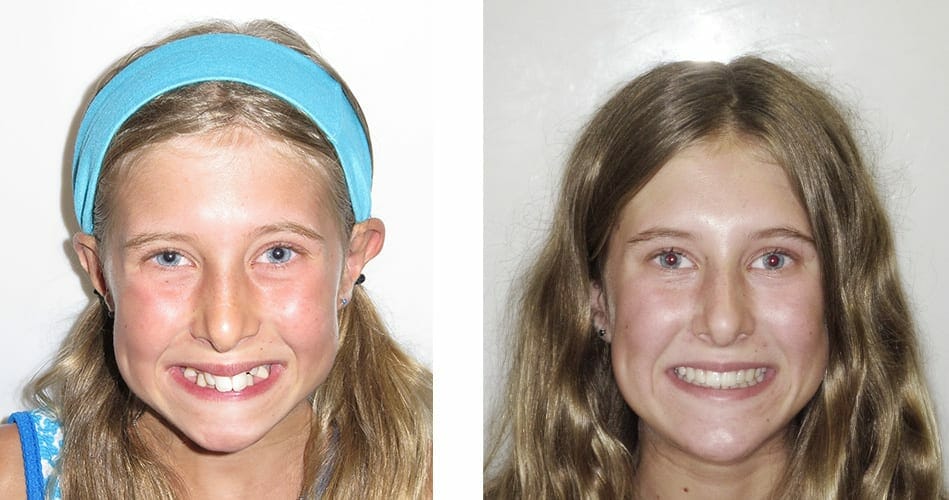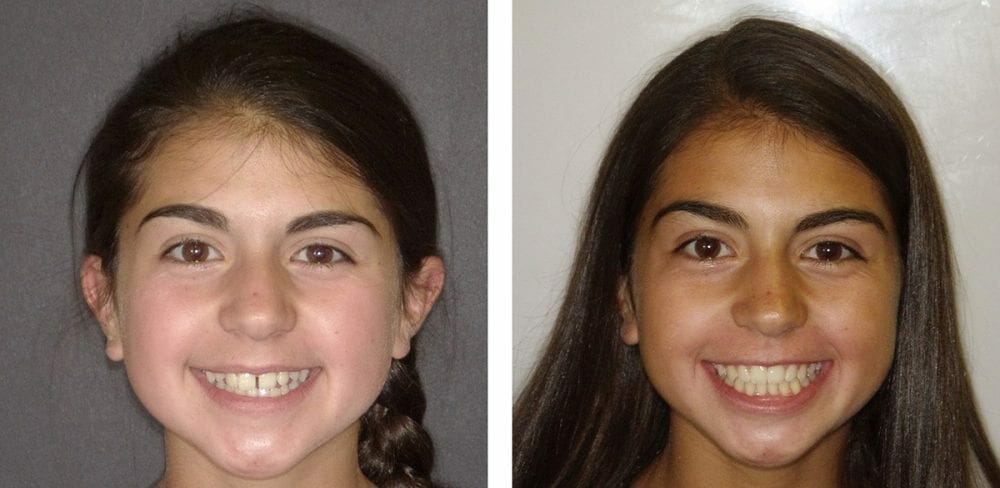What Is a Malocclusion?
Malocclusion is a medical term that refers to the abnormal alignment or fit of the upper and lower teeth. The term comes from the Latin word’s “occlusion” (which means “bite”) and “mal” (which means “bad”). Thus, the literal interpretation of malocclusion is “bad bite.”
Most malocclusions can benefit by orthodontic treatment, usually with braces or Invisalign. However, more severe bite problems may require specialized orthodontic appliances or treatment approaches.

What Causes Malocclusions?
Malocclusions can be caused by a variety of factors, including:
- Many bite problems are passed from one generation to the next.
- Behaviors such as thumb or finger sucking.
- Some bite issues are caused by dental or skeletal issues, such as a cleft lip or palate, injuries, tumors, atypically shaped teeth, missing or extra teeth, or early loss of baby teeth.
Patients often have multiple factors that cause their bite problems. In some cases (such as when thumb sucking is the cause), behavior modification or an orthodontic device known as a habit appliance can be used to correct a developing problem. In most cases, only orthodontic treatment can fix a bite problem.
Classes of Malocclusions
In 1890, Edward Angle (who is considered the father of modern orthodontics) developed a classification system for bite problems based on the position of the six-year molars. According to Angle, a normal bite existed if the front half of the upper six-year molar aligned with center point of the lower six-year molar.
According to Angle, there are three main classes of malocclusions: Class I, Class II, and Class III. Each of these classes is described in more detail below, along with additional divisions and types that fall under each class.
The most common type of malocclusion is Class I. It is estimated that 50% to 55% of children between the ages of 6 and 17 have a Class I malocclusion. The next most common is a Class II, which affects approximately 15% of orthodontic patients. The rarest type is Class III, which affects about 1% of orthodontic patients.
Class I Malocclusions
Class I malocclusions are usually the least serious and easiest bite problem to correct. With a Class I malocclusion, the bite is normal in the front-to-back relationship, but teeth are misaligned in some way. This misalignment may include:
- overlapping or crowded teeth
- rotated teeth
- gaps between teeth (diastema)
- asymmetry
- open bite (when there is a vertical space between the edges of the upper and lower front teeth when biting down on the back teeth)

According to the Dewey-Anderson classification system, Class I malocclusions can be further broken down into five different types:
- Type 1: crowding of maxillary anterior teeth
- Type 2: protruding maxillary incisors with spaces between teeth
- Type 3: anterior crossbite
- Type 4: posterior crossbite
- Type 5: lack of space for teeth behind the canines, premolars, or second and third molars
Treating Class I Malocclusions
Treating Class I malocclusions will depend on which type it is. However, these bite problems can often be corrected with braces or Invisalign. In some cases, a tooth extraction may be needed. Other orthodontic appliances may also be used depending on the case. For example, a Class I malocclusion caused by thumb or finger sucking may be treated with a habit appliance.

Class II Malocclusions
Also known as an overbite, a Class II malocclusion occurs when the upper teeth set forward of the lower teeth, which affects the alignment of the bite. This type of bite problem is very common in an orthodontic practice.
These bite problems are caused by insufficient growth of the lower jaw, overgrowth of the upper jaw, or a combination of both. Many of these bite issues are genetic but can worsen due to oral habits such as finger sucking.
Class II malocclusions can be further classified into two types based on how the upper front teeth are positioned. Each type will require a slightly different treatment plan. The two types are:
- Division 1: Upper front teeth are slanted forward toward the lips
- Division 2: Upper front teeth are slanted backwards toward the tongue
Treating Class II Malocclusions
As with other bite problems, treatment for Class II malocclusions will depend on the type and severity. For children who are still developing, orthodontic appliances such as a Herbst appliance can be used in moderate or severe cases. For milder cases, braces with elastics can fix the problem. If a Class II malocclusion is not corrected early in life, or if the jaw size mismatch is so large that braces alone cannot correct the problem, adults may require orthognathic (jaw) surgery—an expensive and invasive procedure.
Class III Malocclusions
A Class III malocclusion happens when the lower teeth set forward of the upper teeth. This is also called an underbite. This happens because the lower molars are too far forward compared to the upper molars. A jaw size mismatch can be a contributing factor (either the upper jaw is too small, or the lower jaw is too large). This results in an unbalanced facial profile with a protruding lower jaw.
A Class III malocclusion can cause serious problems such as difficulty chewing or the premature wear of teeth. Class III malocclusions can be very difficult to manage because these types of growth patterns are unpredictable. Jaw movement can continue to occur until the patient is done growing (16-18 years of age in females and 18-21 years of age in males, typically). This can sometimes lead to the orthodontist “chasing their tail” when correcting the bite.

Treating Class III Malocclusions
Class III malocclusions require orthodontic correction. Treatment will depend on the type and severity, but some options include palate expanders, braces, or surgery. To prevent the problem from worsening, early intervention is key. Younger children can achieve results with a palate expander that is not possible in adults. This is why all children should visit an orthodontist by the age of 7.
Conclusion
During your complimentary orthodontic consultation with Dr. Redford or Dr. Burke, our orthodontists will conduct a full exam and determine the class and severity of a patient’s malocclusion, and then they will recommend treatment. Contact our main office at (951) 699-8011 or fill out the consultation form on our website.